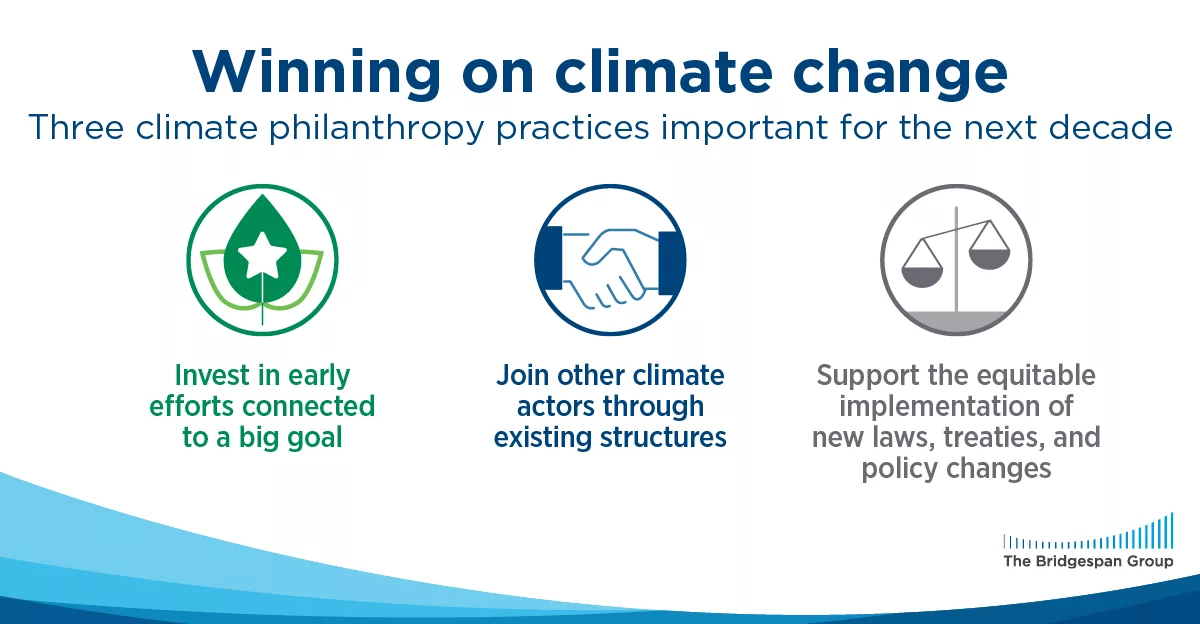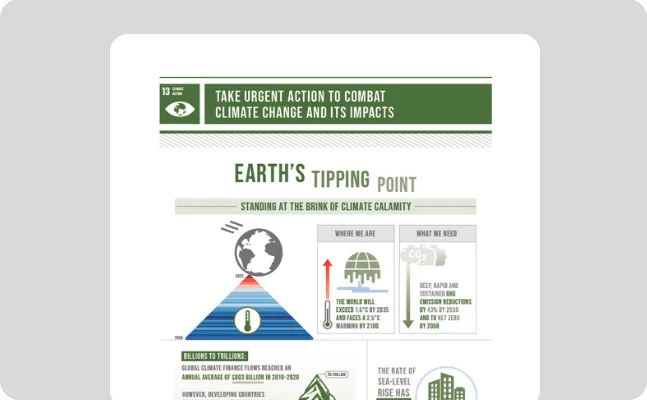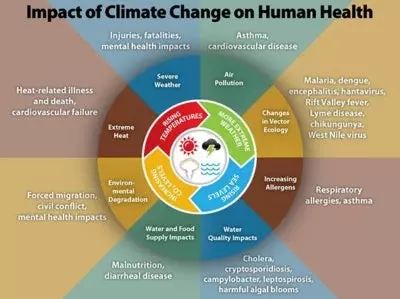
How to Get More from Your Climate Change Foundation Impact in 2025
Are you concerned about how climate change affects your home’s foundation? You’re not alone. Many people are beginning to notice the climate change foundation impact as extreme weather patterns become more frequent. Intense storms and rising sea levels can challenge your home’s stability. Understanding these changes helps you protect your investment and keep your family safe.
Extreme weather threatens more than just your house. The environment around you is changing, too. Soil erosion, rising sea levels, and other climate issues put your property at risk. But there are effective strategies to combat these challenges. You can adapt and respond to these threats, ensuring your home withstands both the present and future climate conditions.
Ready to learn how you can enhance your foundation’s resilience in the face of climate threats? Explore practical solutions and expert insights that empower you to take action against climate stressors. Dive in to safeguard your home and contribute to a sustainable future.
Within the post
Understanding Climate Change Foundation Impact
If you’re wondering how the climate change foundation impact will affect stability in 2025, you’re not alone. Many people are concerned about how changing weather and environmental conditions will affect their homes and buildings in the future. Let’s dive into what you can expect and how you can prepare.
Foundation Stability Challenges
First, let’s look at some of the foundation stability challenges you might face. As climate change continues, foundations will need to withstand more intense conditions. You might wonder how you can maintain your foundation. Well, it’s essential to start by identifying the most significant threats to stability, such as temperature changes and moisture levels.
You’ll want to explore strategies for strengthening support. This might include reinforcing structures or using materials that adapt well to changing climate conditions. For instance, some newer building materials expand and contract with moisture without cracking. These can be valuable for protecting your home or building.
Examine best practices for stability. This includes regular maintenance and inspections to catch small problems before they become big ones. If you notice any cracks or shifts, address them immediately to prevent further damage.
Soil Erosion Effects
Next, let’s understand the role of soil erosion effects on foundations. Soil erosion can severely impact your foundation’s health. As soil washes away, the ground supporting your foundation can weaken, causing it to settle unevenly or crack. To combat this, consider landscaping and drainage solutions that prevent water from pooling next to your foundation. Using retaining walls or planting certain vegetation can help keep the soil intact.
Extreme Weather Foundation Impacts
The extreme weather foundation impacts are becoming more relevant. Intense rains, hurricanes, or droughts can all affect stability. To weatherproof your foundation effectively, ensure proper drainage systems are in place. Gutters and downspouts should direct water away from your foundation.
Protecting against unforeseen climate impacts involves more than just preparation. Consider investing in insurance that covers extreme weather damage. It’s always better to be safe than sorry, especially in areas prone to severe weather patterns.
Climate Impact on Homes
Let’s explore the potential changes to your home. As temperatures rise and weather becomes more unpredictable, you may need to reinforce walls and windows. This can protect your home against wind and water intrusion. Planning home improvements strategically can save you time and money in the long run.
Think about energy efficiency. Solar panels and energy-efficient appliances not only reduce your carbon footprint but can also lower your bills. These changes contribute to your home’s resilience against climate change.
Addressing Environmental Foundation Challenges
Addressing environmental foundation challenges is critical for anyone concerned about climate change. Evaluating risks to your foundation is the first step. Look for signs of wear and tear, such as cracks or water damage, that could worsen over time.
Assessing Potential Risks
Once you’ve identified potential risks, it’s time to implement risk management strategies. These might include reinforcing your foundation or adding waterproof barriers. It’s also wise to have a professional assess your foundation’s condition regularly.
Adapting to Changing Conditions
Adaptation techniques for changing climates are increasingly important. To keep up with the demands of a changing environment, you might need to upgrade your foundation for resilience. This could involve using more durable materials or changing construction methods.
Monitor climate impacts regularly to stay ahead. Track how weather affects your area and adjust your maintenance plans accordingly. Keeping an eye on developments in climate science can also help you anticipate future challenges.
Mitigating Long-Term Effects
To address long-term solutions for foundation health, think about sustainable practices. Evaluate the impact of implemented changes to ensure they are effective over time. This can include monitoring the success of new materials or technologies used in your foundation’s construction.
Securing Your Foundation’s Future requires regular maintenance and adjustments to your strategy as needed. Stay proactive in addressing any issues that arise and consider expert advice when necessary.
Innovative Foundation Solutions
As you look to innovate, consider technological advances that can help. From smart sensors that monitor structural health to new materials that offer better resistance to wear, there are many options to explore.
Preparing Your Foundation for 2025
It’s essential to prepare your foundation for future climate impacts. But how do you do that effectively? Here are some practical strategies for homeowners.
Practical Strategies for Homeowners
Simple steps can go a long way. Start by ensuring gutters and drains are clear and functional. These small actions can prevent water damage during heavy rain. Also, homeowner tips for durability include routine checks for any signs of wear. Don’t ignore small cracks; they can become big problems over time.
Maximize your foundation’s readiness by investing in quality materials and regular inspections. Consider making small improvements now to avoid costly repairs later. Control foundation-related expenses by addressing issues early and maintaining a regular upkeep schedule.
Leveraging Technology
Using tech for foundation monitoring is another way to stay prepared. Smart home systems can alert you to changes in your foundation’s condition. For example, sensors might notify you if there’s unexpected moisture or a shift in the building’s position. These innovative tools for foundation care can save you time and money in the long run.
Cost-Effective Solutions
Affordable measures for foundation health exist even on a budget. For instance, planting a garden strategically around your home can protect the soil from erosion. When you invest wisely in foundation improvements, you’re not just securing your home; you’re enhancing its value.
Consider community efforts as well. Collaborate with your neighbors to address shared challenges. Strengthen your neighborhood’s resilience by working together and pooling resources for common goals.
Government Assistance Programs
Finally, don’t overlook government assistance programs. These can offer financial help or technical advice. Utilize available support effectively by researching what’s available in your area and applying for assistance when needed.
Monitoring and Evaluation Techniques
Monitoring your home’s foundation consistently can help prevent future issues. Establish a routine for inspections to catch problems early.
Regular Inspection Protocols
The key to effective monitoring lies in regular checks. Try these steps:
- Monthly visual checks
- Annual professional assessment
- Post-weather event evaluation
Staying proactive in evaluations can help you maintain your foundation’s health.
Securing Your Foundation’s Future
It’s not just about today; it’s about securing your foundation’s future, too. Start with proactive measures and maintenance.
Proactive Measures and Maintenance
Plan ahead for lasting foundation health. This could involve setting a schedule for checks or investing in new technologies that alert you to changes in real time. The goal is to prevent issues before they arise, saving both money and stress in the long run.
Partnering with Experts
Engage professionals for expert advice when needed. These experts can provide insights that you might not have considered. Receive guidance tailored to your needs, especially if your foundation faces specific challenges like water intrusion or significant soil shifting.
Eco-Friendly Building Practices
Consider the benefits of incorporating sustainable materials in construction. Not only do these materials often withstand changes in climate better, but they also contribute to a healthier planet. By using eco-friendly building practices, you can cut down on emissions and improve your home’s overall resilience.
Take Action for a Stronger Foundation
By understanding the challenges and opportunities of your foundation’s environmental efforts, you gain insight into making a real difference. Tackling issues like soil erosion, extreme weather, and sea level rise strengthens the foundation and protects your community. Feel confident in your ability to drive change by addressing these challenges wisely.
Start by assessing your foundation’s current programs and their impact. Set specific goals for improvement and prioritize areas that require immediate attention, like storm preparedness or soil conservation. Consider collaborating with other organizations to amplify your impact and share resources. Review existing climate strategies and adapt them to your foundation’s unique needs.
Now is the time to act. Begin implementing small changes today and track your progress over time. Join forces with others committed to climate resilience and push for a sustainable future. Your dedication makes a significant difference, so step forward and contribute to a stronger, more resilient foundation.

